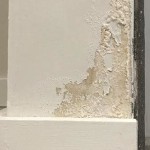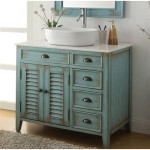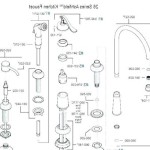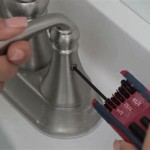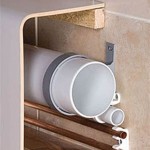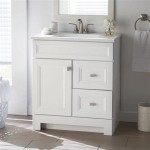The Cost to Install Bathroom Grab Bars: A Comprehensive Guide
Bathroom grab bars are essential safety features that provide stability and support for individuals with mobility challenges. Understanding the factors influencing installation costs can help homeowners budget effectively for this important home modification.
Factors Affecting Grab Bar Installation Costs
Several factors contribute to the overall cost of installing bathroom grab bars. These include:
- Number of Grab Bars: More grab bars naturally increase the overall cost due to additional materials and labor.
- Grab Bar Type and Material: Various types of grab bars exist, from standard straight bars to angled or wave-shaped bars. Materials also vary, including stainless steel, chrome, and plastic, each influencing the final price.
- Wall Type: The type of wall material significantly impacts installation complexity. Installing grab bars on drywall differs significantly from installation on tile or concrete walls, impacting labor costs.
- Wall Reinforcement: Older homes or bathrooms with weaker wall structures may require reinforcement to ensure the grab bars can support the necessary weight. This adds to the project's cost.
- Labor Costs: Labor costs vary by location and contractor. Experienced professionals with specialized knowledge of accessible design may charge higher rates.
- Additional Accessibility Modifications: Combining grab bar installation with other bathroom modifications, such as installing a walk-in shower or adjusting toilet height, impacts the overall project cost.
Average Cost Breakdown
While specific costs vary, a general cost breakdown can offer a helpful starting point. It is crucial to obtain personalized quotes from reputable contractors for accurate pricing.
- Grab Bar Cost: Individual grab bars typically range from $15 to $100 or more, depending on the material, length, and style.
- Labor Cost: Installation labor generally ranges from $50 to $150 per grab bar. Complex installations requiring wall reinforcement or specialized anchoring systems will increase this cost.
- Additional Materials: Costs for mounting hardware, anchors, and other necessary materials typically range from $10 to $30 per grab bar.
Cost-Saving Strategies
Homeowners can explore several strategies to manage the cost of grab bar installation while ensuring safety and functionality.
- Strategic Placement: Prioritize installing grab bars in critical areas, such as near the toilet and in the shower or bathtub, to maximize safety benefits while minimizing costs.
- Standard Grab Bars: Opting for standard straight grab bars made of durable materials like stainless steel offers a cost-effective solution compared to specialized designs or high-end finishes.
- Bundling with Other Renovations: Combining grab bar installation with planned bathroom renovations can lead to cost savings on labor and materials.
- DIY Installation (With Caution): For experienced DIYers, installing grab bars can be a cost-saving option. However, ensuring proper anchoring and weight-bearing capacity is paramount for safety. Consulting with a professional is recommended for complex installations.
Finding Qualified Installers
Choosing a qualified installer is essential for safe and effective grab bar installation. Consider the following factors when selecting a contractor:
- Experience with Accessibility Modifications: Look for contractors with experience in accessible design and bathroom modifications for individuals with mobility challenges.
- Licensing and Insurance: Verify that the contractor is licensed and insured to protect against potential liabilities.
- References and Reviews: Check online reviews and request references from previous clients to assess the contractor's reputation and workmanship.
- Detailed Quotes: Obtain detailed quotes from multiple contractors outlining all costs, including materials, labor, and any additional work required.
Importance of Proper Installation
Proper installation is crucial for the safety and effectiveness of grab bars. Incorrectly installed grab bars can loosen or detach from the wall, posing significant safety risks.
- Secure Anchoring: Grab bars must be securely anchored to wall studs or reinforced backing to ensure they can support the intended weight.
- Weight Capacity: Choose grab bars and installation methods that meet ADA guidelines for weight capacity, typically supporting at least 250 pounds.
- Proper Placement: Grab bars should be placed at appropriate heights and locations to provide optimal support and accessibility.
Long-Term Benefits
Investing in professionally installed grab bars provides long-term benefits, enhancing safety, independence, and overall quality of life.
- Reduced Fall Risk: Grab bars significantly reduce the risk of falls in the bathroom, a common area for accidents.
- Increased Independence: Grab bars allow individuals with mobility limitations to perform daily tasks with greater ease and independence.
- Improved Accessibility: Grab bars create a more accessible and user-friendly bathroom environment for people of all ages and abilities.
Understanding the factors that influence the cost of grab bar installation empowers homeowners to make informed decisions and create a safer and more accessible bathroom environment. Obtaining detailed quotes from qualified professionals is crucial for accurate budgeting and ensuring a successful installation.

Fixr Com Cost To Install Grab Bars

How Much Does Labor Cost To Install A Grab Bar

Installing Grab Bars In Your Bathroom A Complete Guide
Installing Grab Bars In Your Bathroom A Complete Guide

Choosing The Best Grab Bars For Your Home Forbes Health
Installing Grab Bars In Your Bathroom A Complete Guide
Shower Grab Bar Install 101 Home Fixated

Home Grab Bar Pros

Grab Bars Installation Home Safe Baltimore Md

Grab Bar Installations Handi House
Related Posts
